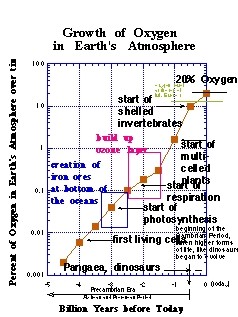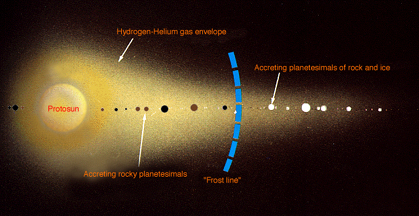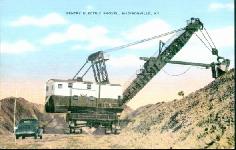Click on image for full size
Kentucky Coal Education Web Site.
The slow build up of Oxygen in the Earth's Atmosphere
It took a long time for oxygen to build up in Earth's atmosphere. At first the atmosphere was made of H, then with volcanic eruptions the atmosphere was made of CO2, SO2, ammonia, and other gases, then the atmosphere was made mostly of nitrogen. Today the atmosphere is 80% nitrogen (N2) and 20% oxygen (O2).The table at the left shows just how slowly it took for oxygen to accumulate in the atmosphere. 3.5 BYA there was only 0.01% oxygen in the atmosphere. 2.5 BYA there was only 0.1% oxygen in the atmosphere. Imagine how hard it would be to breathe in such an environment. At the top of Mt. Everest (where it is very hard to breathe!) there is enough oxygen to be equivalent to 18% levels.
The formation of life on Earth played a very large role in the build up of oxygen in the environment. As early as 3.5 BYA, photosynthetic bacteria began to produce oxygen as a waste product of their activity. That oxygen reacted with iron in the ocean to make iron ore. Later, after the iron in the ocean was gone, and the making of iron ore was finished, about 2.5 BYA, enough oxygen accumulated for respiration (for animals which breathe oxygen) to begin in Once oxygen levels of 1% were achieved, and an ozone layer developed, a seeming explosion in the development of different kinds of life forms occurred. The Earth had entered what is known as the Cambrian age.










